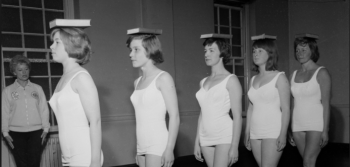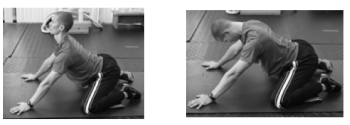Why Posture Matters
Oct 29, 2014
 “Stand up straight!”
“Stand up straight!”“Stop slouching!”
“Sit up!”
These are commands we’ve all heard at one time or another from our mothers or someone else in authority in our lives.
Why is it that we had to be reminded or directed to do so?
Why wasn’t our posture upright and natural like it should’ve been?
And how come we couldn’t keep it there?
And finally, why does posture really matter anyway? Why can’t I just slouch like Slumpy McSlouch-a-lot?
Posture can be an indicator of both health and performance.
If you’re unable to subconsciously hold your head on top of your shoulders, and keep your shoulders, and your shoulders over your hips, and your hips over your knees, and your knees over the center of your feet, with your weight evenly distributed over your feet, then you’re body isn’t operating efficiently.
A forward head position increases the amount of stress on your neck. For every one inch your head moves forward, the relative weight of your head doubles. Think about that. If the average human head weighs between 8 and 10 pounds, if it moves forward one inch off its natural alignment, it feels like it weighs 20 pounds. 2 inches, 40 pounds.
And as your head moves forward, it pulls your neck forward and out of alignment along with the rest of your body.
Where your head goes, your body follows.
When your posture degrades and your head moves forward, you lose the ability to do things like put your arms straight up over your head.
This will cause shoulder issues over time because you don’t have your natural full range of motion, so your soft tissues in your shoulder will literally get jammed into your shoulder structures.
It can also cause weakness in the shoulders and the arms and hands because of compression of your cervical nerves, which innervate your shoulders, arms, and hands, things like carpal tunnel syndrome.
Man, this is depressing! We haven’t even gotten past the upper body yet!
Then there’s the functional shortening that happens all along the front side of the body. Your flexors become short, tight, and in many cases, weak. The muscles on the back side of you body become overly-stretched and inhibited, meaning their new position prevents them from doing their jobs correctly.
This is why lower back pain is common when your posture is compromised.
In fact, the Mayo Clinic even went so far to that “forward head posture leads to long term muscle strains, disc herniations, arthritis, and pinched nerves.” (Mayo Clinic Health Letter, Volume 18, #3, 3/2000.)
Of course, there’s more, but why beat a dead horse? I think we both can see that having bad posture can really screw you up over time.
The real question then is, how do we fix it? And even more importantly, how do we make the “fix” permanent?
Sally Goddard Blythe in her book, The Well Developed Child, states that the ability to control the head dictates our ability to control balance, posture, and coordination. Furthermore, she states that neck strength is a key indicator in our ability to control our head. Having a weak neck equals poor head control and therefore poor balance, posture, and coordination.
So what then, do we get one of those neck harnesses like wrestlers use and build up our necks?
Well you could, but that wouldn't be the best way - the easiest way.
One of the easiest ways is to do what we did when we were infants.
Tummy time.
Lay on your stomach, prop yourself up on your elbows, and hold your head up, just like you did when you watched TV as a kid. And then move your head around. Up and down, side-to-side.
Of course, that’s probably really uncomfortable for most people and may even cause some tightness in your lower back. Not good.
Instead, get on your hands and knees and do the same thing. Look up at the ceiling, loo
 k down at your chest. Lead with your eyes. Make sure you breathe normally without holding your breath.
k down at your chest. Lead with your eyes. Make sure you breathe normally without holding your breath.Look side-to-side over your shoulders.
These are called “Neck Nods.”
And they work amazingly well as a starting place to correct your posture.
Why?
Because moving your head like this activates and highly stimulates your vestibular system, the foundational sensory system in your body that every muscle is connected to. And when you stimulate your vestibular system, you increase / restore your reflexive stability - your body’s ability to anticipate movement and use the right muscles at the right joints at the right times with the right force.
Think of reflexive stability as your “inner strength.” It’s the strength that allows you to do what you do on a normal daily basis.
And it’s your reflexive stability that dictates and controls your posture, your ability to keep your head on top of your shoulders without thinking about it.
And what that means is that posture is a reflex. It’s both static and dynamic. It’s not a position to be held.
Neck Nods help you restore your posture AND they strengthen the weakened muscles on the back of your neck, enabling your body to once again subconsciously and automatically control your head.
And that means you’ll regain control of the rest of your body.
Imagine those shoulders going up over head easily again or that stiffness in your lower back disappearing.
Spend some time on your hands and knees doing Neck Nods and chances are better than good that you’ll won’t have to imagine any longer.
Comments (0)
Please login to comment.